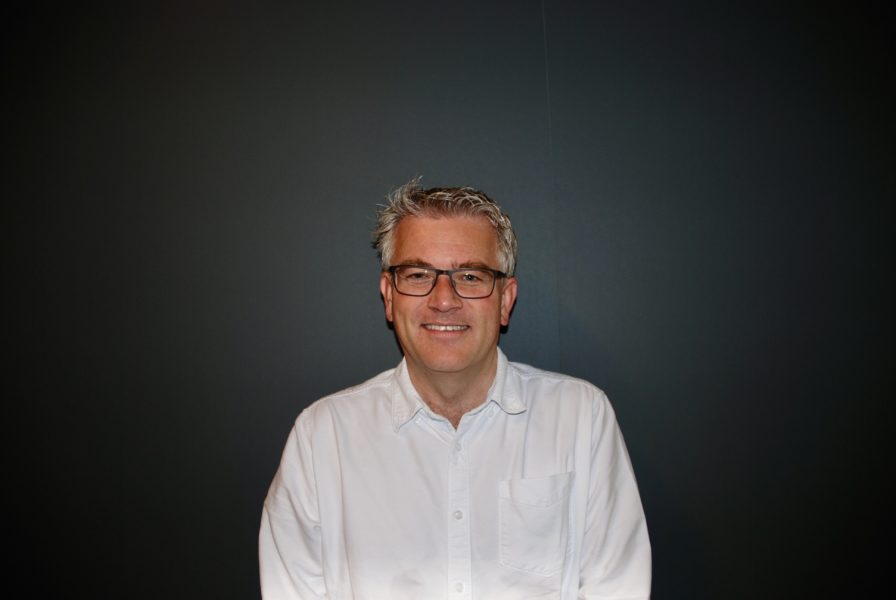
Sean is the Head of Data Innovation at LYS. He spent a moment with us to discuss his work at LYS and the power of data.
Hi, Sean, it’s great to have you here with us today. Tell us a bit about yourself
I live in the UK with my wife and our two children. After studying Computers and Mathematics at the University of Brighton, my career has been based mainly in small and innovative start-ups, where data plays a key role in the business. I’ve always been fascinated by data capture and the transformation of that data into something meaningful.
Tell us a bit about your work at LYS
I am the Head of Data Innovation here at LYS. I’m responsible primarily for the captured data and the infrastructure all around it. The initial part is the capture, thereafter it’s about structuring it in a way that becomes meaningful to us and to our customers.
We collect lots of data. But what is so important is the interpretation, the visualisation and the transformation of it into practical recommendations that people can act upon.
Could you tell us about some of the data projects you have worked on?
I’ve been involved in various projects at LYS. One of the projects was related to the research that dictates how light affects us depending on our age group. It was absolutely fascinating to encode this into an algorithm that can actually respond in real-time to someone’s lighting environment.
Another especially interesting and relevant project was around the pandemic analysis and what effects the lockdown had on us. We compared the first three months of the lockdown last year with the three months of the same period the year before. It was very interesting to see how people’s habits have clearly changed.
People were getting up slightly later. They adapted to the new “working-from-home” way of life. Overall, people were getting less natural daylight than they used to and spent more time in front of their screens before bedtime. If this is the new way of being, then we’ve got to adapt our ways to ensure we stay in tune with our bodies and don’t compromise our health.
There’s always been a recurrent theme throughout my time at LYS – continually structuring the data, analysing and interpreting it. It’s been brilliant, for instance, working alongside our Head of Science, in order to understand and translate scientific research using our data.
LYS holds the largest database of human light intake in the world. How do you ensure data integrity?
Our wearable device records various attributes regarding the light around you, every 15 seconds. We’ve got a database with over a billion entries at the moment, and it is rapidly rising.
Once we collect the raw data, we run various integrity and checking routines. We store and encrypt our data in secure databases. And of course, we have our own data classification policies. We follow all of the best practices to ensure that we are GDPR compliant. It is very important that our data has integrity, is true and is trustworthy.
In your opinion, what are the key attributes of high-quality data?
When I think of high quality, I think of the word trust. With regards to the raw data, we need to make sure it’s high quality and that the devices are properly calibrated. Then it is the best practice around the softer data that is provided by the user as well as the enrichment stage, and the algorithms that are based on proper science. And obviously, we need to constantly check and test everything.
Ultimately, when you capture the data, you translate it, you transform it, you enrich it, and then you do the analytics on it. But what is crucial is how you present that to the final user. They need to have information that allows them to make a decision easily, that they can trust and act upon.
In summary, high-quality data covers everything from data capture to that final visualisation. It could be as simple as a bar chart, but it needs to be trusted!
What is the added value of data-powered tools in personalised health and lighting?
One of the added values is timely recommendations that the users can trust and act upon in real-time. The data can be interpreted and visualised to the end-user to make it seem straightforward and easy to understand. This provides a truly personalised solution to the end-user, and makes data-powered tools incredibly effective.
Another important aspect is validating the science against your data or using data to actually create new hypotheses that can be investigated further, it works both ways. Understanding all the different elements and breaking them down, in my opinion, adds value to make the best-informed decisions.
A question to all of our team members: what have you learned about your inner body clock? Are you a Night Owl or a Morning Lark?
I always saw myself as a morning person. So when I used the LYS Button and did my first few Light Diets®- it did confirm that I was a morning lark. And in fact, a normal morning lark, not an early morning, not an extreme, just a normal morning lark.
But what was far more interesting was the subtleties, and this goes back to the importance of data-powered solutions. What I didn’t know was the quality of the lighting that I had in my home. I could see the spikes in the evenings where I was getting harmful blue light. This turned out to be because of my bathroom lights.
It has been really fascinating to look at our data interpretations, and how many subtle yet very important changes can make a big difference in your life.